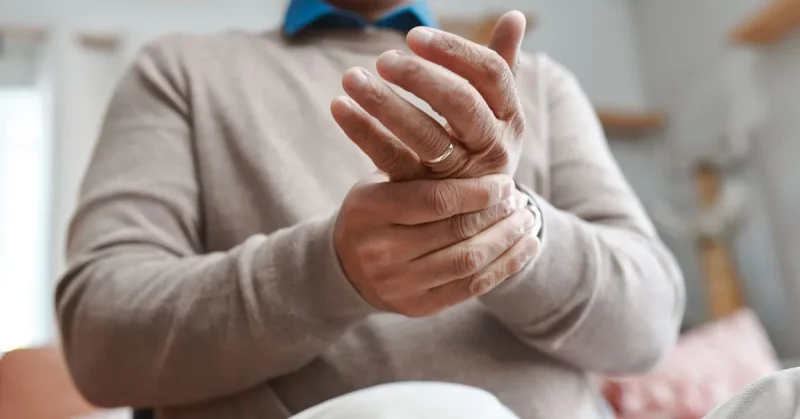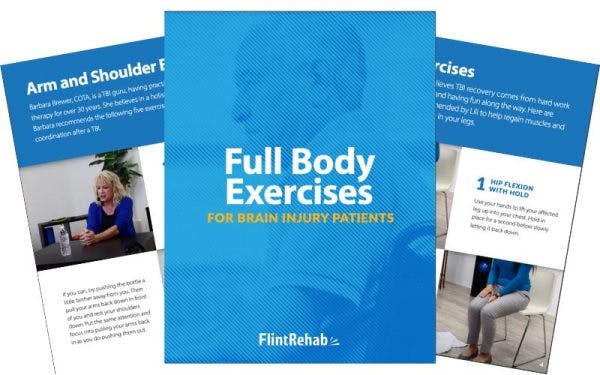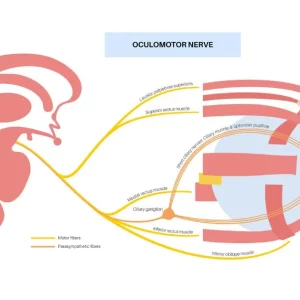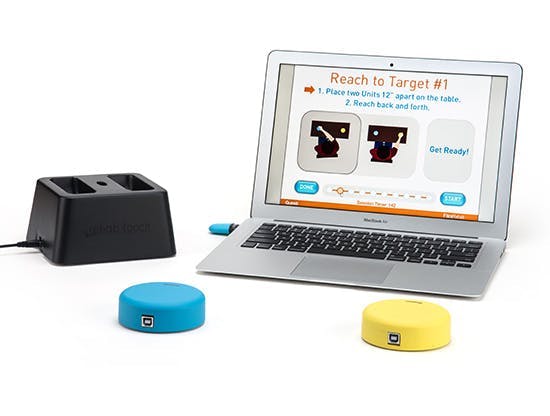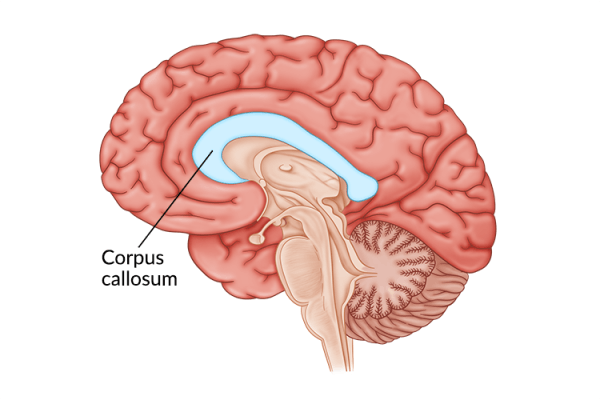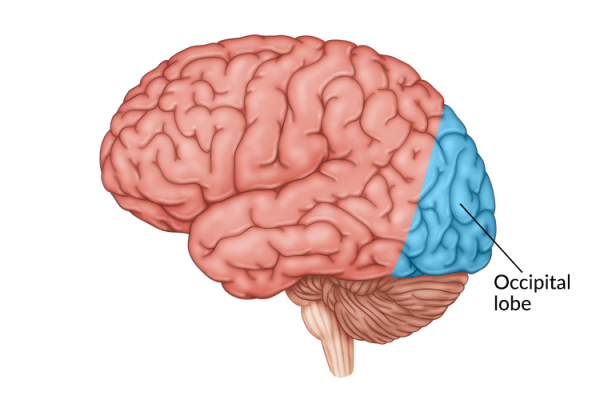Alien Hand Syndrome (AHS) is a rare and often misunderstood condition that can occur after certain types of brain injury. People who experience it may feel like one of their hands is acting on its own, without their conscious control. This can be unsettling and confusing not only for the individual, but also for caregivers and loved ones.
In this article, we’ll explore what causes alien hand syndrome, how it presents, and what treatment options are available. Our goal is to help you better understand AHS so you can recognize and manage this unusual condition.
Let’s jump in!
Jump to a section
Symptoms of Alien Hand Syndrome
Types of Alien Hand Syndrome Explained
How Alien Hand Syndrome Is Identified & Diagnosed
Strategies and Treatment Options for Alien Hand Syndrome
Can Alien Hand Syndrome Improve Over Time?
What Is Alien Hand Syndrome?
Alien Hand Syndrome is a neurological disorder where one hand performs involuntary movements that the person does not consciously initiate. The affected hand may touch, grasp, or move objects without the person intending to do so.
In many cases, the individual is aware of the movement but feels disconnected from it, almost as if someone else is controlling the hand. Occasionally, AHS can also affect a leg.
While it sounds like science fiction, AHS is a well-documented medical condition. It typically arises from damage to specific areas of the brain responsible for motor control and interhemispheric communication.
What Causes Alien Hand Syndrome?
Alien Hand Syndrome usually follows damage to one of three key brain areas:
- Corpus callosum: The thick bundle of nerve fibers that connects the left and right hemispheres of the brain.
- Frontal lobe: Especially the supplementary motor area, which helps plan and initiate movement.
- Parietal lobe: Involved in spatial and sensory processing.
In addition to the areas above, AHS may also occur following damage to the thalamus, which functions as a relay station for sensory and motor signals, or the occipital lobe, which is primarily responsible for visual functions.
There are a number of conditions or common triggers that can contribute to the onset of AHS. Some of these include:
- Stroke: One of the leading causes of AHS, particularly when it affects the corpus callosum or frontal lobe.
- Traumatic Brain Injury (TBI): Car accidents, falls, or blows to the head can disrupt neural pathways.
- Neurosurgical procedures: In rare cases, AHS can follow surgery involving the brain’s motor areas or interhemispheric structures.
- Brain tumors or lesions: Abnormal growths can interfere with regions that control movement.
- Neurodegenerative diseases: Conditions like corticobasal degeneration and Creutzfeldt-Jakob disease have been linked to alien hand symptoms.
Alien hand syndrome most frequently occurs in those with corticobasal degeneration, as over 60% of individuals with corticobasal degeneration also have AHS.
Symptoms of Alien Hand Syndrome
Symptoms vary depending on the type and severity of the brain injury, but common signs include:
- Involuntary hand movements: The hand may pick up objects, touch the face, or make gestures without intent.
- Lack of awareness: People often describe the hand as “not mine” or feel that it has a mind of its own.
- Conflicting movements: One hand may undo the actions of the other.
- Frustration or embarrassment: Especially in social situations, these movements can cause distress.
In severe cases, the alien hand may interfere with daily tasks like dressing, eating, or using a computer. Some individuals report feeling attacked or restrained by their own hand, which can be emotionally disturbing.
Types of Alien Hand Syndrome Explained
Alien Hand Syndrome (AHS) can present in different ways depending on the part of the brain that’s been injured. Each type is linked to a specific brain region and leads to distinct patterns of behavior in the affected hand.
Recognizing the type of AHS can help doctors choose the most appropriate treatment strategies and help patients better understand what they’re experiencing.
Let’s take a look at the 3 main types of Alien Hand Syndrome.
1. Callosal Type (Corpus Callosum Involvement)
This form of AHS usually affects the non-dominant hand, which is often the left hand in right-handed individuals. It occurs when there is damage to the corpus callosum, the structure that allows communication between the left and right sides of the brain.
When the corpus callosum is impaired, each hemisphere may act independently. As a result, one hand might perform actions that conflict with the other. For example, while one hand attempts to button a shirt, the other may try to unbutton it. This “intermanual conflict” is a hallmark of the callosal type.
Key features:
- Typically affects the left hand
- Hands may appear to “fight” each other
- The person may be aware of the movement but unable to stop it
- Often seen after strokes or surgical procedures involving the corpus callosum
2. Frontal Type (Supplementary Motor Area Involvement)
The frontal type is most commonly associated with damage to the supplementary motor area (SMA) of the frontal lobe, which plays a key role in initiating and planning voluntary movements.
This version may affect either hand and is characterized by compulsive grasping or reaching behaviors. The hand may reach out to touch or grab nearby objects, even if the person has no intention to do so. This is sometimes called “magnetic apraxia,” where the hand seems drawn to objects in its environment.
Key features:
- Can affect either hand
- Involuntary reaching, grasping, or groping
- Movements may be triggered by nearby visual cues
- The hand seems to “act on impulse” without the person’s control
3. Posterior Type (Parietal Lobe, Occipital Lobe, or Thalamic Involvement)
This less common type of AHS is linked to damage in the parietal or occipital lobes, which are involved in sensory processing and spatial awareness. Unlike the frontal or callosal types, the posterior variant may include abnormal sensations in addition to involuntary movement.
The affected hand may move in strange, uncoordinated, or exploratory ways, and may also unintentionally “levitate” upward. People with this type of AHS may have trouble recognizing the hand as part of their body (a condition known as asomatognosia) and may not even be aware of the movements until they see them.
Key features:
- Can affect either hand
- Movements are erratic or exploratory
- May include sensory issues (tingling, numbness, or disconnection)
- The person might not recognize the hand as their own
Why These Differences Matter
Each type of alien hand syndrome reflects disruption in a different neural pathway. Because the symptoms and triggers vary, treatment and coping strategies must be tailored to the specific form of the condition. For instance, visual cue management may help with frontal type AHS, while strategies to improve interhemispheric communication may be more useful in the callosal type.
Understanding the neurological basis behind each variant not only supports more accurate diagnosis, but also empowers patients and caregivers with better tools for management.
How Alien Hand Syndrome Is Identified & Diagnosed
Diagnosing AHS involves a combination of medical history, symptom description, and neuroimaging.
Key Steps in Diagnosis:
- Clinical observation: Doctors may observe hand movements during an exam.
- Patient report: Descriptions of the hand acting independently are important.
- Imaging tests: MRI or CT scans can identify brain lesions or areas of trauma.
- Neurological evaluation: Rule out other movement disorders or psychiatric conditions.
Because AHS is rare, it can be mistaken for other disorders such as complex partial seizures, obsessive-compulsive disorder, or functional neurological disorders. Accurate diagnosis is essential for appropriate care.
Strategies and Treatment Options for Alien Hand Syndrome
Coping with alien hand syndrome requires patience, creativity, and support. While there is no cure, many strategies can help reduce symptoms and improve quality of life.
Occupational Therapy
Occupational therapy plays a key role in helping individuals manage alien hand movements and adapt daily routines for greater independence. An OT may use a number of strategies including:
- Task modification: Adjusting how daily activities are performed to reduce interference from the alien hand
- Hand containment: Wearing a glove, using a pocket, or holding an object can help restrain the hand.
- Bilateral tasks: Encouraging both hands to work together in purposeful ways may reduce unwanted movement.
- Compensatory strategies: Introducing techniques, such as activity pacing, may help improve symptoms.
Cognitive Strategies
In addition to occupational therapy, cognitive strategies can help retrain the brain and reduce the frequency or intensity of involuntary hand movements.
Some simple strategies to try may include:
- Verbal cueing: Saying commands like “stop” or “stay still” can sometimes interrupt involuntary movements.
- Visualization: Mentally rehearsing a task before performing it may enhance coordination and focus.
- Distraction techniques: Keeping the alien hand engaged with an object can reduce random movements.
Medications
While there are no drugs specifically approved for AHS, some medications used for movement disorders may help in certain cases.
These include:
- Clonazepam
- Botulinum toxin (Botox) injections
- Antipsychotics (in rare, severe cases)
Remember to always consult with your doctor or neurologist before starting any medication. Never start any new medication regimen without checking with a qualified healthcare professional.
Support Systems
Support groups and counseling can help individuals process the emotional impact of living with AHS. Feeling out of control or misunderstood can lead to anxiety or depression, so mental health support is just as important as physical therapy.
Join our online Life After Traumatic Brain Injury (TBI) – Group for Survivors & Caregivers
Can Alien Hand Syndrome Improve Over Time?
In some cases, symptoms may lessen as the brain heals or adapts. Neuroplasticity, the brain’s ability to reorganize and form new connections, can play a role in recovery, especially when combined with rehabilitation.
However, progress varies. Some people experience long-term symptoms, while others see gradual improvement over months or years.
Key factors that influence recovery include:
- Severity and location of brain injury
- Age and overall health
- Consistency of therapy
- Emotional resilience and support
Even if full control doesn’t return, many individuals find ways to adapt and regain independence with the right tools and resources.
The Importance of Early Detection and Treatment for AHS
Early recognition of alien hand syndrome can make a difference in long-term outcomes. The sooner therapy and adaptive strategies are introduced, the better the chances of regaining some control and reducing frustration.
Therefore, if someone experiences unusual hand movements after a brain injury, don’t dismiss them as “nervous tics” or side effects of medication. Bring it to the attention of a neurologist or rehabilitation specialist who can assess the symptoms and offer guidance.
Final Thoughts
Alien Hand Syndrome is rare, but very real. For those who experience it after a brain injury, it can affect both physical function and emotional well-being. The hand may feel foreign, act out of sync, or even interfere with simple tasks but with the right care and support, it’s possible to adapt and improve.
If you or a loved one is living with AHS, know that you’re not alone. Occupational therapists, neurologists, and support groups can offer practical tools and emotional encouragement. While it may take time to regain control or adjust to a new normal, every step forward matters.
